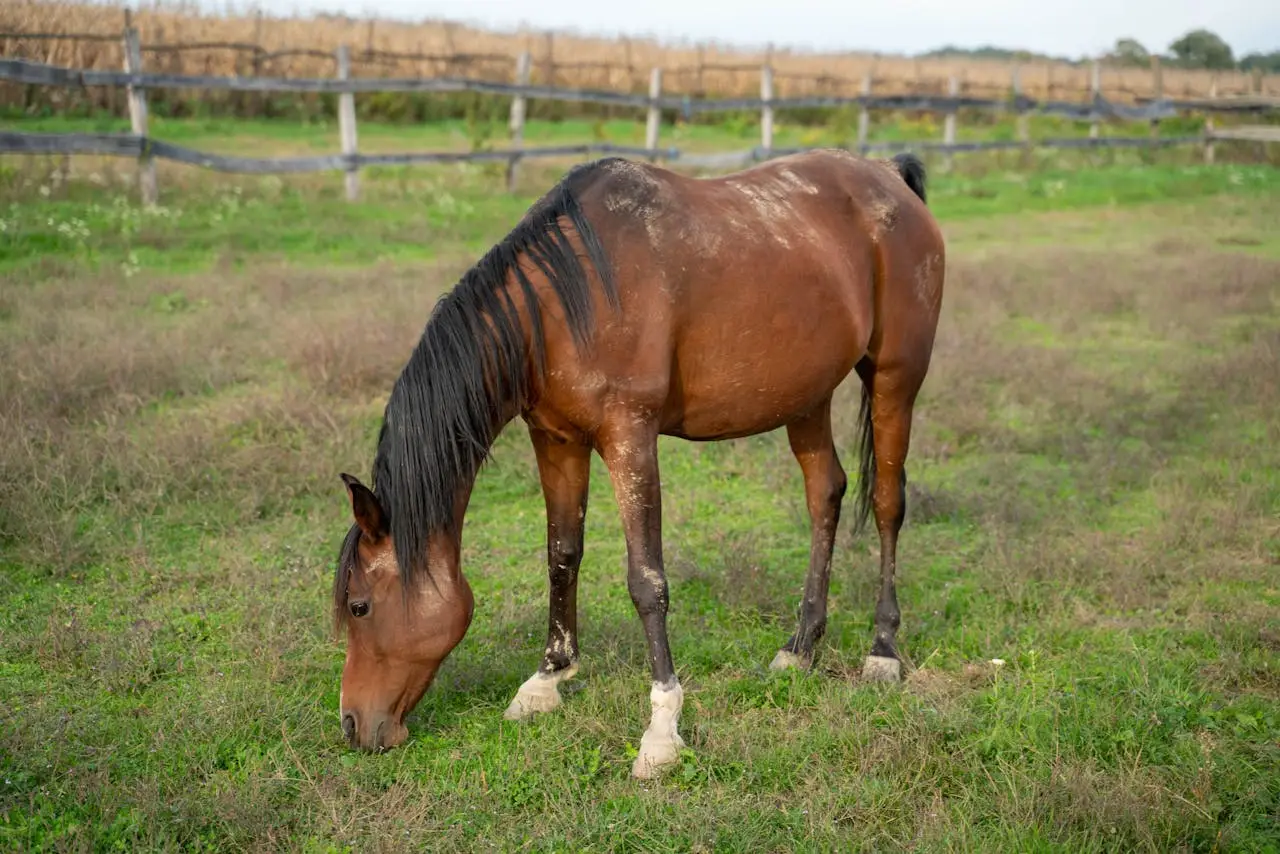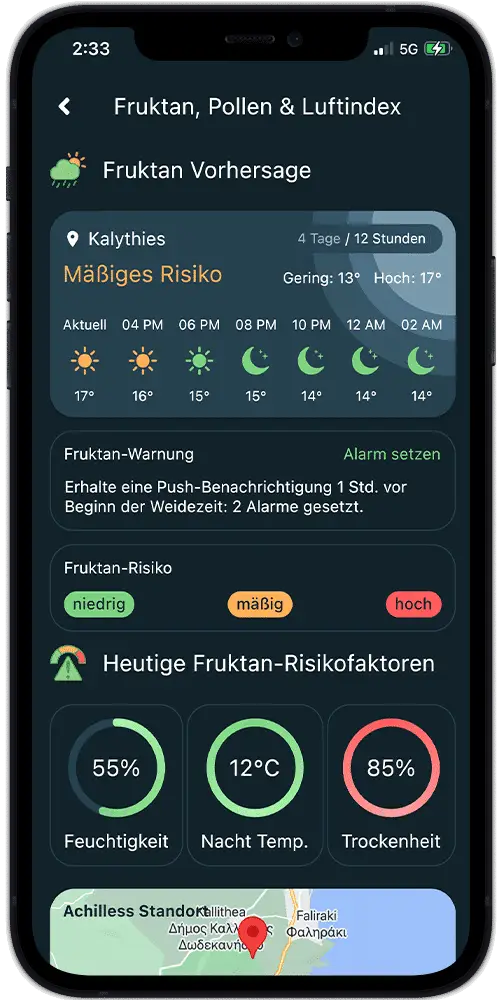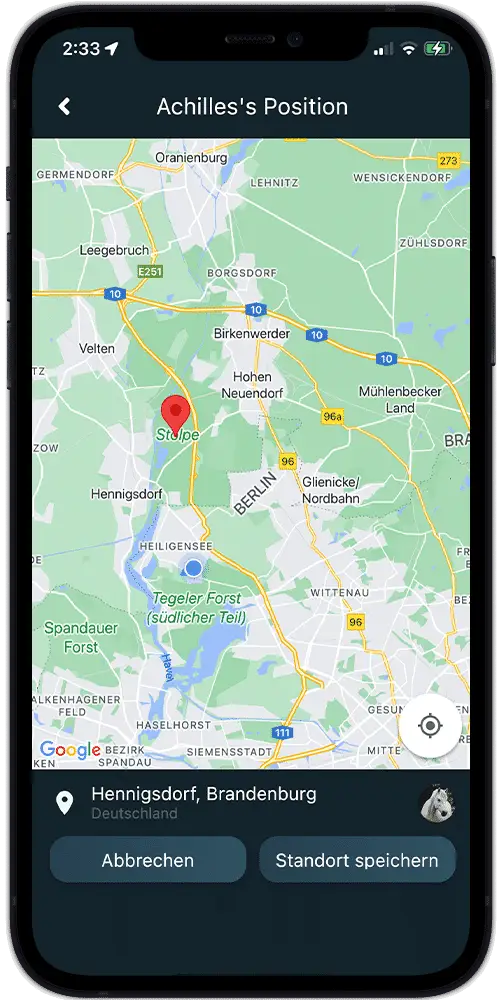
Fructan alert: How to master the grazing season month by month with the Happie Horse app
Does your horse love fresh grass? You do too! But the sugar in grass, especially fructan, can be dangerous for sensitive horses. The tricky thing is that the fructan content fluctuates – not only from day to day, but also over the course of the year.
In this article, you will learn how the fructan content in the grass changes month by month and how the Happie Horse app helps you to guide your horses safely through the year.
Table of contents
Understanding fructan: Why the sugar content in grass varies and what it means for your horse
Fructan is a form of sugar that plants use to store energy – especially when the grass grows in cool temperatures. For horses with sensitive metabolisms, too high a fructan content can be problematic. As the sugar content in the grass is heavily dependent on weather conditions and the seasons, it is important to keep an eye on these fluctuations in order to adjust the grazing times optimally. Below you can find out how the fructan content develops over the course of the year and how you can always stay well informed with the Happie Horse app.
Spring fever and fructan traps
-
March & April: The sun comes out, temperatures rise and the grass starts to sprout. But beware: the fructan trap lurks in young grass! The plants store a lot of sugar now to boost their growth. With the Happie Horse app, you can keep an eye on the fructan risk.
-
May: May brings blossoms – and unfortunately also the high fructan season. The fructan content reaches its peak during this month. Pay particular attention to checking the grazing times.
-
June: In June, the fructan content slowly drops to a lower level. Now is the ideal time to optimize grazing times.
Summer, sun, fructan chaos?
-
July & August: In midsummer, the fructan content is highly dependent on the weather. During drought or extreme heat, the sugar content in the grass can increase again. The Happie Horse app helps you to keep track of this.
-
September: Autumn is approaching and the risk of fructan increases again. Prepare yourself and your horses for the fall months!
Fall time – watch out, fructan wedding season!
-
October: In October, the fruit content reaches its second peak. The plants store energy to prepare for the winter. Special care is required here – plan the grazing times accordingly.
-
November: Fructan levels remain high in November, especially on sunny days. The Happie Horse app shows you when you need to be careful.
Winter rest? Be careful with sun and frost!
- December to February: Although grass growth stops in the winter months, the fructan risk remains – and can even be extremely high. It is particularly dangerous on sunny days with temperatures below 0 degrees, as the plants then store a lot of fructan without breaking it down. The fructan content in the grass remains high even at temperatures below 8 degrees and in the sun. This means that even in winter, you should keep an eye on the fructan situation to protect your horses.
The solution: Relax through the grazing season with the Happie Horse app
Feeling overwhelmed by the fructan fluctuations? Don’t worry, the Happie Horse app does the work for you!
This is how the app supports you:
-
Location-based Fructan Risk Management feature: The app calculates the fructan risk in your region – updated daily and for the coming days. So you always know exactly whether the pasture is “safe”.
-
Individual grazing plans:Create profiles for your horses and store important information such as breed, age, weight and metabolic diseases. The app helps you to optimally adapt the grazing times to the needs of your horses.
-
Early warning system:Be warned via push notification when the fructan content in your region reaches critical levels. This allows you to react in good time and protect your horses.
How Does Fructan Risk Management Work?
- Input your horse’s data into the Happie Horse App, select the type of grass, and specify the grazing times.
- The app calculates the fructan content based on weather data and sends you a push notification if the laminitis risk increases.
The app provides the following alerts:
- Green: The fructan content is low, low risk.
- Yellow: Moderate risk, increased caution.
- Red: High fructan content, grazing should be restricted.
If the Fructan Risk Management feature is red, you can use the app to restrict grazing and consider alternative feed sources to protect your horse.
Daily grazing time
Note and observe your horse's daily grazing time, and display the past grazing time in a table.
Fructan risk
Check the daily fructan risk at your horse's location and keep an eye on your horse's health. See current fructan risk factors.
Get push notifications
Receive notifications about specific fructan risks based on your selection
Location
You can use the location function to display your current location and the weather, and set different locations for different horses.
Weather forecast
Monitor the weather at your horse 's current location. Choose between a 12-hour and a 4-day forecast.
Past grazing times
Get an overview of past grazing times and fructan risks. Perfect for the grazing or grazing period.
Additional tools in the Happie Horse app
Alongside Fructan Risk Management, the Happie Horse App offers additional helpful features:
- Feeding protocol: Keep track of the feeding and adapt it to the fructan content of the feed.
- Health data: Track important health parameters such as your horse’s pulse and temperature.
- Calendar function: Schedule important vet and farrier appointments to ensure your horse’s health status.
Conclusion: Relaxed through the year - with the Happie Horse app!
The Happie Horse app is your personal pasture manager – 365 days a year! It takes away the uncertainty and helps you to optimize your grazing time. Your horses will stay healthy and happy and you can relax and enjoy the grazing season!




